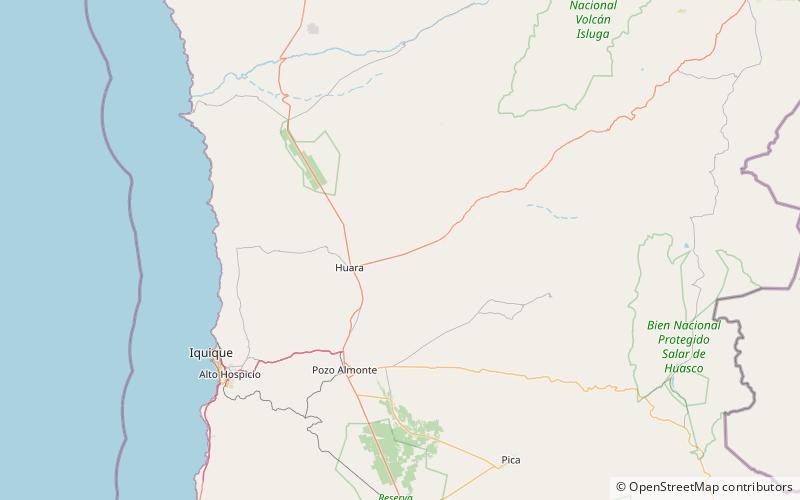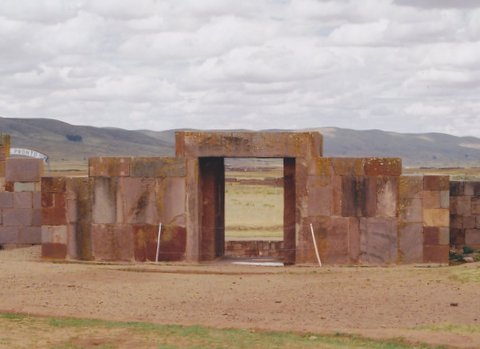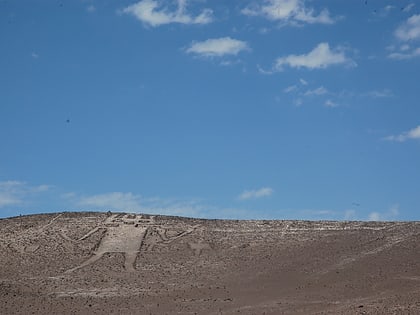Atacama Giant


Facts and practical information
The Atacama Giant, an awe-inspiring geoglyph etched into the hillside of the Atacama Desert in Chile, is one of the largest ancient geoglyphs in the world. This archaeological site, located near the town of Huara, is thought to have been created between 1000 and 1400 AD and stands as a testament to the region's rich pre-Columbian history.
Spanning an impressive 119 meters in height, the Atacama Giant is a figure believed to represent a deity that was important to the local inhabitants, possibly linked to the fertility of the land and the cycles of water and rain, which are critical in such an arid environment. The figure is part of a larger group of approximately 5,000 geoglyphs—large designs or motifs produced on the ground—that dot the Atacama landscape, but none rival the Giant in size or prominence.
The geoglyphs were crafted by removing the dark stones that cover the surface of the desert to reveal the lighter earth beneath. This technique, combined with the dry climate of the Atacama, one of the driest places on Earth, has allowed the Giant and its companion figures to endure for centuries.
Despite its ancient roots, the Atacama Giant was not internationally recognized until the 19th century. Since then, it has drawn the attention of archaeologists and tourists alike. The site provides valuable insights into the culture and beliefs of the indigenous peoples who once thrived in this harsh environment.
Tarapacá
